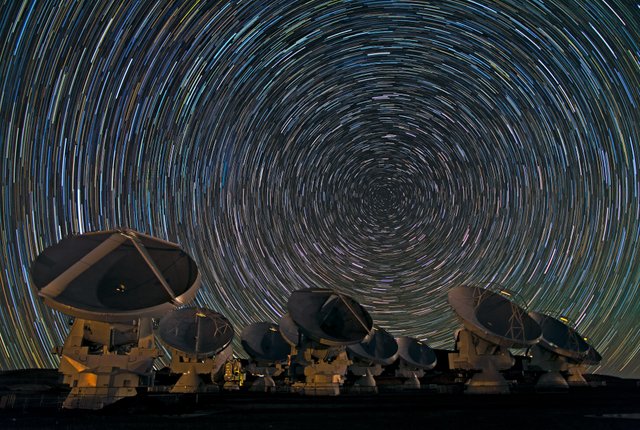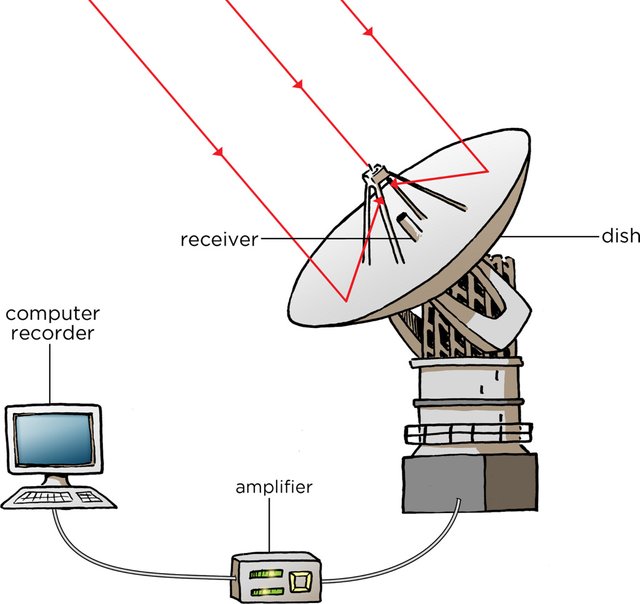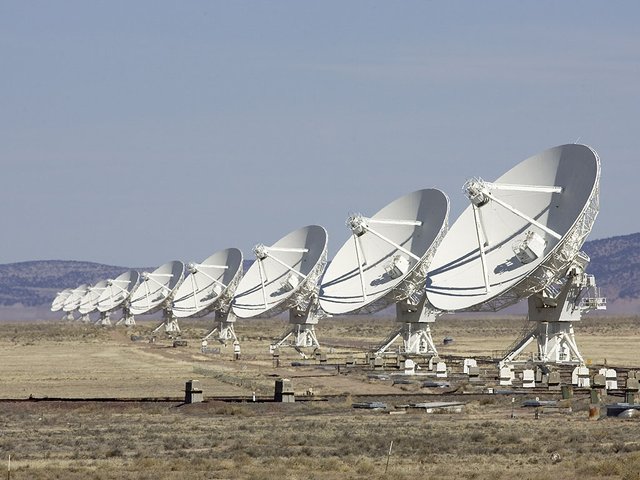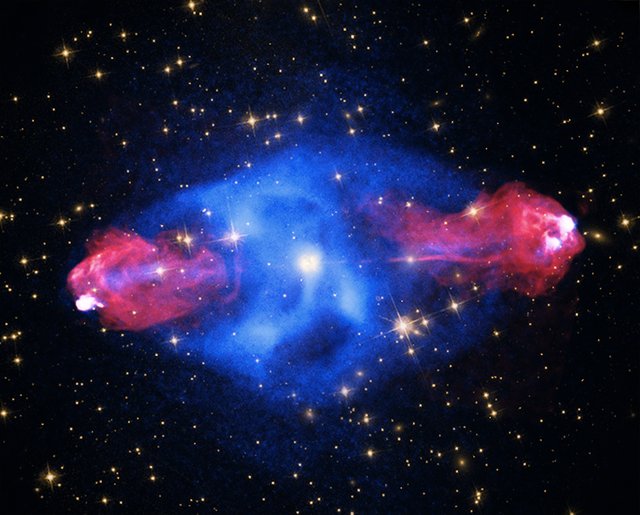Let's talk about radio telescopes and radio Interferometry
The invention of telescopes has completely changed our view of how does the night sky look. We have discovered that we are living just in a little part of a large galaxy which is just a small part of billions of galaxies of the universe. Although not sure though how many universes out there, is it universe or multiverse. String theory predicts that it's multiverse. But hey that is a topic of another day. My goal today is to talk a bit about radio telescopes. It is a bit different from our traditional telescopes (optical telescopes). Now, one can ask the question why we need this? Well, let us begin then and talk about light because ultimately it is the basic phenomenon which answers most of the question in physics.

Why radio telescopes?
As we know the light is an electromagnetic wave, so according to the definition of the wave, it should have a property called wavelength. To common people, light is something we can see but to us physicists, it is not. There are different types of light, visible light is only one part of it. This different types of light depending on their wavelength. Now let me ask you a question, how can we tell something is somewhere? Well, if light from that object falls into our eyes and if the wavelength of light is in between the range we can see. Now, let's look at the night sky. According to our definition, we will see the stars which are visible in our range. But does stars emit in other range of light? The answer is yes. It depends on the temperature the star has. But that is the topics of another day. Only four percent or below is visible to human eyes, Most of the other stars and interstellar medium emit light in other range. So, because of that, we need to make telescopes depending on the wavelength of light. Another problem is not all kind of wavelengths can pass through the earth's atmosphere. Radio waves can easily pass through the earth's atmosphere and there is part of the night sky which we can see in visible light but we can easily measure in radio waves. But now one can ask, we can't see radio waves how will we measure them. I will discuss it in the next paragraph below. Here you can see in the picture below how the night sky looks in different wavelengths.

What is a radio source
After world war 2 the field of radio astronomy was improving day by day. It was found that a particular part of the sky emits more in radio waves than the others. These sources are called then radio sources. Because of technological advancement as more sensitive telescopes were invented the number of radio sources increased. During the beginning, it was hard for optical astronomers to identify which of the radio objects of a region they have already discovered. It needed for the radio telescope at least 1 arcminute or less to identify those objects. But still, there were some interesting objects like exploded stars and nebulae were discovered back then. We know now so many types of radio objects such as stars, different galaxies, pulsars, quasars, molecular gas in the interstellar medium, Sun, planets etc. The purpose of radio astronomy is to know about the cosmic radio waves, where they come from what kind of objects radiated this kind of waves.
How does the radio telescope work
When we look at an optical telescope, one of the most important parts is the lens for the refractor and mirror for the reflecting. The radio telescope is no way different from this but we just use a parabolic shape antenna instead of the mirror. Now the question is why parabolic shaped? Well, mathematically this shape has the more capacity to reflect the incoming radio wave toward the focus. This focus is called the receiver. As we know that these radio waves are weak in signals. So, they are amplified to a measurable level so that we can measure them. The amplifier is always maintained in a cold temperature as it is highly sensitive and noise created because of the movement of the atoms or molecules in the metal which later can create an inference pattern. So, we need to be really careful of these noises. It is known as the thermal noise. This data are later recorded in computer memory card for further analysis.
To observe radio waves we need to make bigger telescopes. Especially as antennas are reflectors, the dimension of the antennas should be larger than the dimension of the wavelength. That is why the astronomers are trying to make larger and larger radio telescopes but there is a problem in that which is, we can not make it so large that it will fall under its own weight but if we want to observe large wavelength radio waves we need to make a bigger telescope. I will come to the solution soon.

For bigger wavelengths, the circumference of the reflector works as a diffraction opening. Diffraction affects the quality of radio observation a lot. Diffraction is one of the major problems in radio telescopes. It can be avoided making radio telescopes with larger dimensions. But that will create a major construction problem in making them.
Because of diffraction in the case of longer wavelength the resolution power becomes so less. Resolution power is proportional to the diameter of the parabolic reflector and inversely proportional to the wavelength. For example, the biggest single antenna telescope in Jordell Bank (diameter 76 m) when measures wavelength around 8 m will have resolution power around 9 degree which is so less. If the angular dimension of sources is so small it is not possible to separate them with this kind of resolution power. So, to make solve this problem we need to make larger telescopes. Where scientists come with a new solution called radio interferometry.
Radio Interferometry

I told what is the necessity of a radio telescope up above. Now let us see how it works. We need to make telescopes with larger diameters to have more resolution power. But as I said large has a limit. So, in that case, we combine two or more telescopes together which observe the same object and later send the signals to a powerful computer and amplify it and then measure it. Let me give an example. Let us say I have two telescopes in a football field looking at the same object. So, if we move the telescopes to every point of the field and collect data, then we get data which we could have got from a telescope having the diameter of a football field. But scientist understood that from the perspective of the source, the telescopes will be seen moving because of the rotation of the earth. So, we don't even manually need to move it.
World largest aperture synthesis telescope is known as Very Large Array. It is situated in the New Mexico. It is a combination of 27 telescopes of 25 m diameter which gives it a Y shape. Each hand of Y is 21 km long. It is located in the railroads. To completely get the most obtainable aperture each telescope has to be moved to a different position in every few months. The most stunning object observed by a radio telescope is Cygnus A.

Very Bong Baseline Array is another example of radio interferometry. 10 antennas are located from Virgin island to Hawaii and 8 are distributed over the United States. It can obtain a resolution of 0.2 milliarcseconds.
Radio Astronomy has made it possible to observe and know about objects which are undetectable in the optical telescope. Objects like pulsars and quasar and radio galaxies have completely changed our idea of the universe which was just like a science fiction before. That's all for today. Steem on until next time.
Reference
1. Dejan Urosevic, Introduction to the theory of Astrophysics.
2. Gerrit Verschuur, The invisible universe
3. Kristen Rohlfs, Tools of radio astronomy
4. astrosurf

This post has been voted on by the steemstem curation team and voting trail.
There is more to SteemSTEM than just writing posts, check here for some more tips on being a community member. You can also join our discord here to get to know the rest of the community!
Hi @rifkan!
Your post was upvoted by utopian.io in cooperation with steemstem - supporting knowledge, innovation and technological advancement on the Steem Blockchain.
Contribute to Open Source with utopian.io
Learn how to contribute on our website and join the new open source economy.
Want to chat? Join the Utopian Community on Discord https://discord.gg/h52nFrV
Congratulations @rifkan! You have completed the following achievement on the Steem blockchain and have been rewarded with new badge(s) :
Click on the badge to view your Board of Honor.
If you no longer want to receive notifications, reply to this comment with the word
STOP